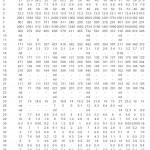Physico-chemical Characterization of Water Body with Special Reference to Battery, Power Sources and Metal Plating Effluents
Dhananjay Dwivedi1 and Vijay R. Chourey2
1
Department of Chemistry,
PMB Gujarati Science College,
Indore,
452001
India
2
Government Holkar Autonomous Science College,
Indore,
452001
India
DOI: http://dx.doi.org/10.12944/CWE.7.1.19
The World is facing a tremendous set of environmental problems which are due to the contaminated ground water and hazardous waste effluents coming out of process industries due to advanced industrialization in different field. Thus, it is essential to rectify this problem.
Copy the following to cite this article:
Dwivedi D, Chourey VR. Physico-chemical Characterization of Water Body with Special Reference to Battery , Power Sources and Metal Plating Effluents. Curr World Environ 2012;7(1):125-131 DOI:http://dx.doi.org/10.12944/CWE.7.1.19
Copy the following to cite this URL:
Dwivedi D, Chourey VR. Physico-chemical Characterization of Water Body with Special Reference to Battery , Power Sources and Metal Plating Effluents. Curr World Environ 2012;7(1):125-131. Available from: http://www.cwejournal.org/?p=1986
Download article (pdf) Citation Manager Publish History
Select type of program for download
| Endnote EndNote format (Mac & Win) | |
| Reference Manager Ris format (Win only) | |
| Procite Ris format (Win only) | |
| Medlars Format | |
| RefWorks Format RefWorks format (Mac & Win) | |
| BibTex Format BibTex format (Mac & Win) |
Article Publishing History
| Received: | 2012-04-03 |
|---|---|
| Accepted: | 2012-04-20 |
Introduction
The life on the earth depends on the water. Everything originated in the water and sustain by water. It is most common abundant, indispensable, inorganic component of the earth’s environment, constitutes living matter predominantly. It is a prime resource and physiological necessity to mankind.
This work include the sample collection technique, collection, preservation and handling of collected sample. The collected samples were analyzed for the determination of Physico-chemical parameter i.e. colour, temperature, Eh, pH, specific conductivity, total solid, dissolved solids, acidity total hardness, alkalinity, TDIC, TOC, DO, BOD, COD & Phenols.1-2
Analysis of cadmium, chromium, nickel, copper, iron, lead, zinc, manganese, magnesium, arsenic, calcium & vanadium ions performed with the help of Flame Atomic Absorption spectroscopy.13-14
Carbonates, bicarbonates, sulphide, sulphate, phosphate, total-N, nitrate-N, nitrite-N, organic nitrogen and chlorides are analyzed using standard method.
Experimental
The samples collected from the effluents at the time of mixing into the river khan were analyzed to determine various physico-chemical parameter and to study the preserve of cations and anione. As there are no. of different resourced which are discharging continuously their effluents in the river. Due to this a separate study was carried out on the effluents of each source at the function point and tabulized accordingly work is performed on the effluents discharge by,
- Battery and power sourced effluents.
- Metal plating effluents.
For the determinants of undertaken parameters, a set of four sample from each source on each data as given in the table were analyzed for the year 2005-06 and results are summarized in the subsequent tables.
Results and Discussion
Battery and power sources
The effluent contains toxic cations viz. Vi, Cd, Zn, Pb & traces of v. The major fractions constituted from this industry is lead it’s highest concentration was found in March and April. The values decreased largely in downstream. Ni was found in the range of 11.0.4 ppm, with a decreasing trend with season and year. Vanadium was identified from the residence of oil fired boilers and flue, liner, vanadium in water may be accounted for teaching from residence.
 |
Table 1: Battery and Power Sources : Analysis of physico chemical characteristics of effluents Click here to View table |
 |
Table 2: Battery and Power Sources : Analysis of physico chemical characteristics of effluents Click here to View table |
 |
Table 3: Battery and Power Sources : Analysis of physico chemical characteristics of effluents Click here to View table |
 |
Table 4: Battery and Power Sources : Analysis of physico chemical characteristics of effluents Click here to View table |
The discharge from battery industries related particularly with the recyclic activity, contributes the major fraction of the toxic materials to the water of river khan. The COD, values were high owing to in organic chemicals. DO & BOD values followed decreasing trend towards downstream.
The efficient acidic in nature having pH<4.4 Though the quantity of discharge is less but it’s effects are considerably harmful to aquatic biota.
Among the major anions identified form the effluents were carbonated, sulphates, chlorides and phosphates.
The organic content was found to be high which are characteristics of the TDC values depicted as in the table (2T1 - 2T8). Apart from these, phenols were identified from the effluent of transformer and polymer processing wastes which are dumped in the vicinity of river Khan and related site.
Metal Plating/Refining
Because of diversified applications the waste effluent from electroplating contributed a variety of toxic and hazardous anions viz. carbonates, chlorides, sulphates and also the cations viz. copper, cadmium, zinc and nickel etc. The effluents directly taken from source differ in appearance owing to different processes.
Effluent was acidic in nature at source, which had slightly shifted to neutral after being discharged into the stream and at the downstream pH remained < 7.1.
Concentrations of total solids existed high in the effluent. The concentration at the source was highest in April and March. About 75% of total solids was present in dissolved state and remaining is in suspended form. Thus the dissolved solids increased total solids in suspended form. Thus the dissolved solids increased total solids in April.
The COD values increased with total solids while the BOD values does not reveal any significant observation.
Among cations chromium (o.5-30 mg/L) (0.3-13mg/L during Jan. 05-Nov. 05 and Nov. 05-Sept. 06 respectively and cadmium (at source) ranged (1.9-21mg/L) during Jan. 05 - Nov. 06 and (0.5 - 12 mg/L) during Nov. 05 - Sept. 06. In downstream the concentrations of chromium were also found very high and may be explained in terms of high sulphates and due to the low sedimentation property of chromium. In contrast to chromium, cadmium reduced completely in downstream. The
| P- Parameter | SS-Sampling Site I to IV | ||
| 1. Color | 21 | Bicarbonate | |
| 2. Temperature °C | 22 | Carbonate | |
| 3. pH | 23 | Phenol | |
| 4. Eh in MV | 24 | Phosphate | |
| 5. Specific Conductivity | |||
| in MS | 25 | Total N | |
| 6. Dissolve Solids | 26 | Nitrate-N | |
| 7. Suspended solids | 27 | Nitrite-N | |
| 8. Total Solids | 28 | Organic-N | |
| 9 Alkalinity | 29 | Iron | |
| 10 Total Hardness | 30 | Copper | |
| 11 | Acidity | 31 | Nickel |
| 12 T.O.C. | 32 | Manganese | |
| 13 T.D.I.C. | 33 | Cadmium | |
| 14 | D.O. | 34 Zinc | |
| 15 C.O.D. | 35 | Lead | |
| 16 | B.O.D. | 36 | Chromium |
| 17 | Chloride | 37 | Magnesium |
| 18 | Sulphate | 38 Vanadium | |
| 19 | Sulphite | 39 | Calcium |
| 20 | Sulphide | 40 | Tin |
| 41 | Arsenic | ||
Mean concentration (except colour, temperature & pH) expressed in Mg./L
G - Gray, T - Turbid, Bf - Buff, n.d. - Not Detected
presence of ions in the source needs special attention as it concerts more Cr(VI) to Cr (III) resulting in high dissolved concentration of Cr (III). Apart from these, nickel and zinc were also contributed from other pools constituting a mined effluent.
The metal refining processor also discharge highly toxic forms of metallic species such as vanadium, lead etc. High levels of lead were detected in the out coming effluents. The results of analysis is given in table from (2T9-2T16).
Conclusion
The effluents coming into water body (Pond) is characterized to be highly acidic in nature having pH<4.4. Though the quantity of discharge from industrial unit is less but it’s effects are considerably harmful to aquatic biota. The waste effluents from electroplating contributed a variety of toxic and hazardous anions as discussed on the basis of available date of study.
References
- U.S. Mineral year book Bureau of Mines. U.S. Govt. Printing Office, Washington D.C. (1960-1979)
- Niragu J.O. Fisher R.P. Nature, 279: 409-11 (1979).
- Toxic metals in Soil Plant System (Ede S.M. Ross). Wiky and Wons New York, 3-25 (1994).
- Zantoponlos N.V. Bull. Znviron, Contamin Toxicol. 62: 691-699 (1999).
- APHA Standard methods for examination of water and waste 20th Ed., American Public Health Association, Washington D.C., (1995).
- Meeker E.W. and Wagner E.C. 2nd Eng. Chem. Anal. Ed. 5: 396, (1993).
- Booth R.L. and Thomas R.F. Environ Sci. Tech.7: 523 (1973).
- Tessier A et. al. Anal. Chem, 51: 844-51(1979).
- Gupta V., Agrawal J., Purohit M., Res. J. Chem. Environ, 11(1): 40 (2007).
- Orhan, Y., and Byu-Kgungor The removal of Hearey Metals by using, Agricultural Waste Water, Water Sci, Technol, 28: 247 (1993).
- Larren L., and Aamand Degradation of herbicides in two sandy aquifers under different red ox conditions. 44(2): 231-236 (2001).
- V. Magarde, S.A. Iqbal, N. Iqbal and I. Zaafarany, Orient. J. Chem., 27(2): 703-711 (2011).
- P. Sannasi, S. Salmijah. Orient. J. Chem., 27(2):
- V. Magarde, S.A. Iqbal, S. Pani and N. Iqbal. Orient. J. Chem. 26(4): 1473-1477 (2010).







